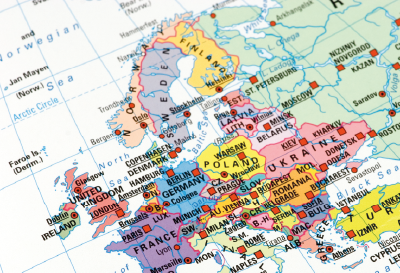What is the Swedish Migration Agency doing to combat abuse and crime?
People tend to think of organised crime, welfare abuse and security threats as matters for the police or the Swedish Security Service. But the Swedish Migration Agency also plays an important role in preventing and combating criminality and the abuse of Sweden’s welfare and regulatory systems – as this article will highlight.
The Swedish Migration Agency cooperates with other authorities and helps to combat the abuse of Sweden’s welfare systems and various types of crime. This article focuses on organised crime, work-related crime, human trafficking and incorrect payments. The agency’s work to detect security threats and war crimes is described in the article How we work to detect security threats.
Organised crime
In 2024, the Swedish Migration Agency reported more than 2,800 measures carried out within the context of its efforts to fight organised crime, including the revocation of residence permits and expulsion decisions. One example that year was a major case concerning berry pickers, in which around 2,500 residence permit applications were rejected.
Over the course of 2024, the Swedish Migration Agency also detected around 400 cases of abuse of the regulatory system. These mainly related to individuals who had not legalised their stay, irregular employment that had lead to further family immigration, and unfounded asylum applications for the purpose of work.
Together with several other authorities, the Swedish Migration Agency is also part of a joint organised crime-fighting initiative. The collaboration is being led by the Swedish Police Authority and conducted within the framework of intelligence work and operational efforts, where information exchange is an important part of the work. Information exchanged in this context can lead to important actions by the Swedish Migration Agency and other authorities, in terms of both law enforcement and administrative measures.
Read more about this work in the report
Myndigheter i samverkan mot den organiserade brottsligheten [“Authorities Collaborating to Fight Organised Crime”], available on polisen.se (in Swedish only) External link, opens in new window.
External link, opens in new window.
The Swedish Migration Agency also participates in the Södertörn University-led initiative Sverige mot organiserad brottslighet (SMOB) [“Sweden Against Organised Crime”], in which various actors civil society and business collaborate to strengthen efforts to combat organised crime.
More about SMOB on the website of Södertörn University [in Swedish only] External link.
External link.
Combatting work-related crime together with other authorities
When companies or organisations deliberately break the laws and rules that govern working life, this is known as work-related crime. Examples of such crime include situations in which an employer breaks health and safety rules, takes advantage of benefits to which they are not entitled, or employs staff without work permits.
In 2024, more than 2,300 workplace inspections were carried out as part of the authorities’ joint efforts. The Swedish Migration Agency was able to support a large number of inspections, especially with regard to the help it provided to the Border Police. In total, information regarding suspected criminality was transferred to over 650 cases at the Swedish Migration Agency. In January 2025, the Swedish Migration Agency introduced a special method for following up on its processing of the cases in question.
The Government has tasked the Swedish Migration Agency and a number of other national authorities with developing common control methods to counteract rule violations and crime in working life. The Swedish Public Employment Service, the Swedish Economic Crime Authority, the Swedish Social Insurance Agency, the Swedish Police Authority, and the Swedish Tax Agency are among those involved.
Since 2022, seven centres for preventing work-related crime have been opened, where the authorities can come together to plan, implement and monitor their joint efforts to combat fraud and crime. The centres are located in police premises in Umeå, Uppsala, Örebro, Stockholm, Gothenburg, Norrköping and Malmö.
 Zoom image
Zoom imageSince 2022, seven centres for preventing work-related crime have been opened on police premises, where several authorities work together to combat fraud and crime.
A crucial role in the fight against human trafficking
The Swedish Migration Agency also contributes to the fight against human trafficking and similar crimes, such as human exploitation. The Swedish Migration Agency must identify suspicious cases and report suspected criminality to the police. It is also tasked with referring potential victims to the regional coordinators of the Swedish Gender Equality Agency’s work to combat prostitution and human trafficking.
These crimes often have an international connection, and the Swedish Migration Agency strives to ensure that it is impossible to use various types of residence permits for criminal purposes. This work permeates all of the Swedish Migration Agency’s processes, and every employee at the agency contributes to the efforts. All suspected human trafficking and exploitation must be specially reported in the Swedish Migration Agency’s system.
In 2024, the Swedish Migration Agency identified 684 potential victims of suspected human trafficking/human exploitation. Excluding a single group case with many potential victims, the most common nationalities were Uzbekistani, Nigerian and Ukrainian, which was in line with the previous year’s statistics. These figures represent an increase compared to 2023, when 576 cases were identified. The year before, that number was 515. The increase is probably due to both an increased ability to identify suspicious cases and the large group case.
You can read more in the news article More cases of human trafficking identified
 Zoom image
Zoom imageIncreased number of identified victims of human trafficking during the period 2022–2024.
Working together to ensure payments are correct
The Swedish Migration Agency is also tasked with helping to prevent incorrect payments from the welfare system – which cost the Swedish state between SEK 13 and 16 billion in 2021. The Swedish Migration Agency will also help to reduce crime against welfare systems.
Read the Swedish National Financial Management Authority’s report on incorrect payments from welfare systems Säkerställ korrekta utbetalningar från välfärdssystemen – förslag på åtgärder 2024 [“Ensuring Correct Payments from Welfare Systems – Proposed Actions for 2024”], in Swedish only External link, opens in new window.
External link, opens in new window.
For the Swedish Migration Agency, payments from the welfare system (regardless of whether they are correct or incorrect) relate to financial support provided to asylum seekers. The agency works in various ways to ensure that these payments are correct and that those that are incorrect are detected. Among other things, this is accomplished by studying the extent of incorrect payments, developing procedures and operational support, and coordinating the work internally and with other authorities. The Swedish Migration Agency has several training courses aimed at increasing knowledge about asylum seekers’ right to aid, incorrect payments, and the obligation to notify other authorities if incorrect payments are suspected.
Externally, the Swedish Migration Agency cooperates with other authorities to identify measures and stop money from being paid out on incorrect grounds. One example is the MUR initiative, Motståndskraft hos utbetalande och rättsvårdande myndigheter, mot missbruk och brott mot välfärdssystemen [“Payment and Law Enforcement Authorities’ Resistance to the Abuse and Breach of Sweden’s Welfare Systems”], in which a number of authorities are participating, including the Swedish Public Employment Service, the Swedish Work Environment Authority, the Swedish Social Insurance Agency, the Swedish Tax Agency and the Swedish Police Authority.
The collaboration has saved the authorities a lot of money. One example is the cooperation with the Swedish Social Insurance Agency, which shows that both recoveries and prevented incorrect payments have increased sharply in recent years with the help of the Swedish Migration Agency’s notifications. In 2024, the Swedish Migration Agency’s notifications helped the Swedish Social Insurance Agency to recover almost SEK 5 million while simultaneously stopping future incorrect payments in the same amount.
Another example is the cooperation with the Swedish Pensions Agency. In 2023 and 2024, more than 200 notifications from the Swedish Migration Agency allowed the Swedish Pensions Agency to save nearly SEK 3 million annually through recoveries and around SEK 8 million by stopping suspected future incorrect payments.
 Zoom image
Zoom imageThe number of notifications of incorrect payments from the Swedish Migration Agency to the Swedish Social Insurance Agency and the Swedish Pensions Agency increased sharply during the period 2022–2024.
 Zoom image
Zoom imageIncorrect future payments that could be stopped by the Swedish Social Insurance Agency and the Swedish Pensions Agency thanks to notifications from the Swedish Migration Agency increased during the period 2022–2024.
 Zoom image
Zoom imageRecoveries from the Swedish Social Insurance Agency and the Swedish Pensions Agency that could be made thanks to notifications from the Swedish Migration Agency increased during the period 2022–2024.
What is happening at the Swedish Migration Agency?
Increasing the ability to prevent and counteract abuse of regulations and case processes is one of the Swedish Migration Agency’s priority areas, wherein a number of initiatives are underway.
The Swedish Migration Agency has recently set up a unified control organisation to prevent and counter abuse and threats to society. It consists of a national control unit, a control unit in each region, and a control function for overseas operations. The control organisation creates opportunities for a system of control through organisation, working methods and measures that give the agency the ability to identify abuse and threats in all its processes.
The agency is also making changes to ensure its ability to handle tip-offs and other information. A national hotline has been set up and staffed. In the spring, it will become the central recipient for identifying, registering and distributing all tip-offs for further processing within the agency. Two web forms will be available – an internal one for staff and an external one for the public.
Furthermore, the Swedish Migration Agency will take part in three government mandates led by the Swedish Tax Agency, in which multiple authorities will enhance their cooperation and competence on identity issues in order to combat identity fraud.

Other rules when children become adults
The provisions on family reunification/immigration are based on the idea that families should be kept together – therefore the issue is emotionally charged and raises certain questions when a young adult is to be deported while the rest of the family is allowed to stay in Sweden. How can that happen? In this article, we will answer questions about people who reach adulthood and are no longer subject to the rules on family reunification.
.png)
What happens between the time of application and decision?
Why is the waiting time sometimes very long before receiving a decision and why does it differ between two similar applications?

Free movement within the EU – how does it work?
Freedom of movement within the EU means that a French or German citizen can come and work in Sweden – but what about an Indian who has a residence permit in Spain, or his wife and children? The rules for different groups coming to Sweden differ somewhat – in this article we clarify the concepts.